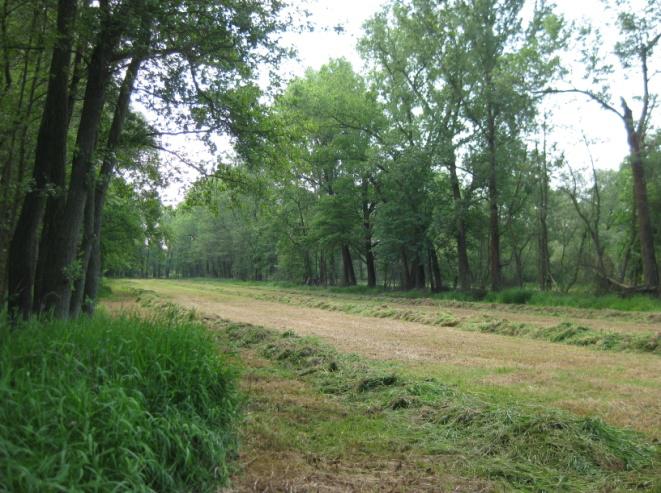
Agroforestry in the Spreewald flood plain, Germany
Description of system
The Spreewald Biosphere Reserve covers about 475 km2 and is situated in Brandenburg to the South-East of Berlin. The area is dominated by a network of waterways, and the combination of land ownership and the installation of small transportation canals, that have later been planted with trees has resulted, in places, in tree-lined hedgerows that demarcate relatively small-sized fields. The dominant tree species are black alder (Alnus glutinosa (L.) Gaertn.), black poplar (Populusnigra L.) and bird cherry or hackberry (Prunus padus L.). The grassland is either mowed or grazed by cattled that are used for meat or milk production.
Initial stakeholder meeting
The first meeting of a small stakeholder group was held on 16 October 2014. The perceived positive aspects of the agroforestry system included pasture production, the enhancement of biodiversity and wildlife habitats, the diversity of products, and soil conservation. The negative issues included the labour requirements and the difficulties in developing regional markets for products from the area. Issues such as a 10 m maximum hedgerow width to be eligible for single farm payments, and restrictions on using products harvested from the tree rows were also mentioned. Potential areas of research include minimising fencing costs, improved marketing, and economic analysis of agroforestry systems with and without governmental support. If you would like to know about the activity of this group, please contact[nbsp]Dr Jaconette Mirck (mirck@tu-cottbus.de) or Penka Tsonkova[nbsp](penka.tsonkova@tu-cottbus.de) at BTU Cottbus-Senftenberg.
Download the initial stakeholder report
An initial stakeholder report was produced in October 2014.
Download the initial research and development protocol
A research and development protocol was produced in March 2015.
Download the system description
A system description describing the initial research on the hedges in the Spreewald area was produced in November 2015.
Lessons learnt
Penka Tsonkova and colleagues describe a strategy of restoring the tree-lined waterways in the Filow area in the Spreewald flood plain.[nbsp] The habitat is valued for its biodiversity and landscape. The restoration process involves replanting the hedgerows with a mixture of native species, including fast growing trees, such as black alder (Alnus glutinosa), poplar and willow species, as well as some slower growing species. The cost of restoration is high being about 24 €/m for planting, 18 €/m for fencing (for both sides of the hedgerow), and 18 €/m to clear the waterways and create soil walls for hedgerow establishment. The report describes the planting arrangements and fuelwood prices where the revenue from harvesting wood for fuelwood is sufficient to cover harvesting costs. It also highlights the importance of simplifying the grant application process and enhancing the value of harvested fuelwood.